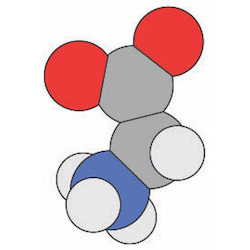BioMolViz - Development of an Inclusive Community for the Instruction of Visualizing Biomolecules (RCN-Introduction)
Author(s): Josh Beckham1, Daniel R. Dries2, "KP" Kristen Procko1
1. University of Texas at Austin 2. Juniata College
398 total view(s), 149 download(s)
Description
In life science courses, students encounter myriad information-rich images; for example, a macromolecule may be represented very differently, depending on context and the author’s preference. Whether a student sees what their instructor expects them to see in a given image corresponds to the student’s visual literacy—their ability to interpret features and cues that are both explicitly and implicitly displayed. Despite the importance of developing this skill, instructors often do not provide deliberate instruction in image interpretation. This can result in misinterpretation and misconceptions in students with underdeveloped visual literacy skills.
To advance visual literacy instruction, BioMolViz provides instructor support for teaching biomolecular visualization. In 2018, in collaboration with the biochemistry and molecular biology education community, the team authored a Biomolecular Visualization Framework that subdivides overarching themes in visual literacy into discrete learning objectives (biomolviz.org/framework, Dries et al. 2018). Through workshops and online working groups, BioMolViz has trained instructors to craft assessments through backward design using the Framework. These iteratively reviewed assessments undergo validation through expert panel review and field testing in classrooms; they may be further revised or reapproached based on the results of these analyses. Assessments at various stages of the validation process are broadly available to instructors through the BioMolViz Library.
BioMolViz workshops help participants build skills that facilitate inclusive biomolecular visualization instruction in their classrooms. Our assessment writing training encourages authors to avoid jargon that may unnecessarily challenge students with unfamiliar terms, or for whom English is a second language. Through our molecular modeling program training, we teach instructors how to create colorblind-friendly images using popular modeling programs. We have also recently developed an online workshop on content creation for open educational resources that includes a 3D molecular modeling component.
Our community has been fortunate to collaborate with other networks focused on molecular visualization and/or assessment. Our co-PI, Dan Dries, is co-founder of an Inclusive Community for the Assessment of Biochemistry and Molecular Biology Learning (ICABL). BioMolViz director, Kristen “KP” Procko, is an active member of Molecular CaseNet (MCN), a network for authoring case studies at the interface of biology and chemistry. Our steering committee includes CURE community members from the Biochemistry Authentic (BASIL) and the Malate Dehydrogenase Cure Community (MCC). The ICABL, MCN, and MCC networks are represented at this summit.
Ways to learn more:
- Check out the BioMolViz newsletter
- BioMolViz poster from 2022 ASBMB Meeting
- Procko, K., Bakheet, S., Beckham, J. T., Franzen, M. A., Jakubowski, H., & Novak, W. R. (2021). Modeling an Enzyme Active Site using Molecular Visualization Freeware. JoVE (Journal of Visualized Experiments), (178), e63170.
Ways to get involved:
- Subscribe to the BioMolViz newsletter
- View upcoming BioMolViz events
- Browse and use the visual literacy assessments in the BioMolViz library
If you are interested in learning more and participating please join this group or email Josh Beckham, Kristen Procko, or the team for general inquiries.
Cite this work
Researchers should cite this work as follows:
- Beckham, J., Dries, D. R., Procko, ". K. (2023). BioMolViz - Development of an Inclusive Community for the Instruction of Visualizing Biomolecules (RCN-Introduction). RCN-UBE Community, QUBES Educational Resources. doi:10.25334/QYY2-F328


 RCN-UBE #1920270
RCN-UBE #1920270